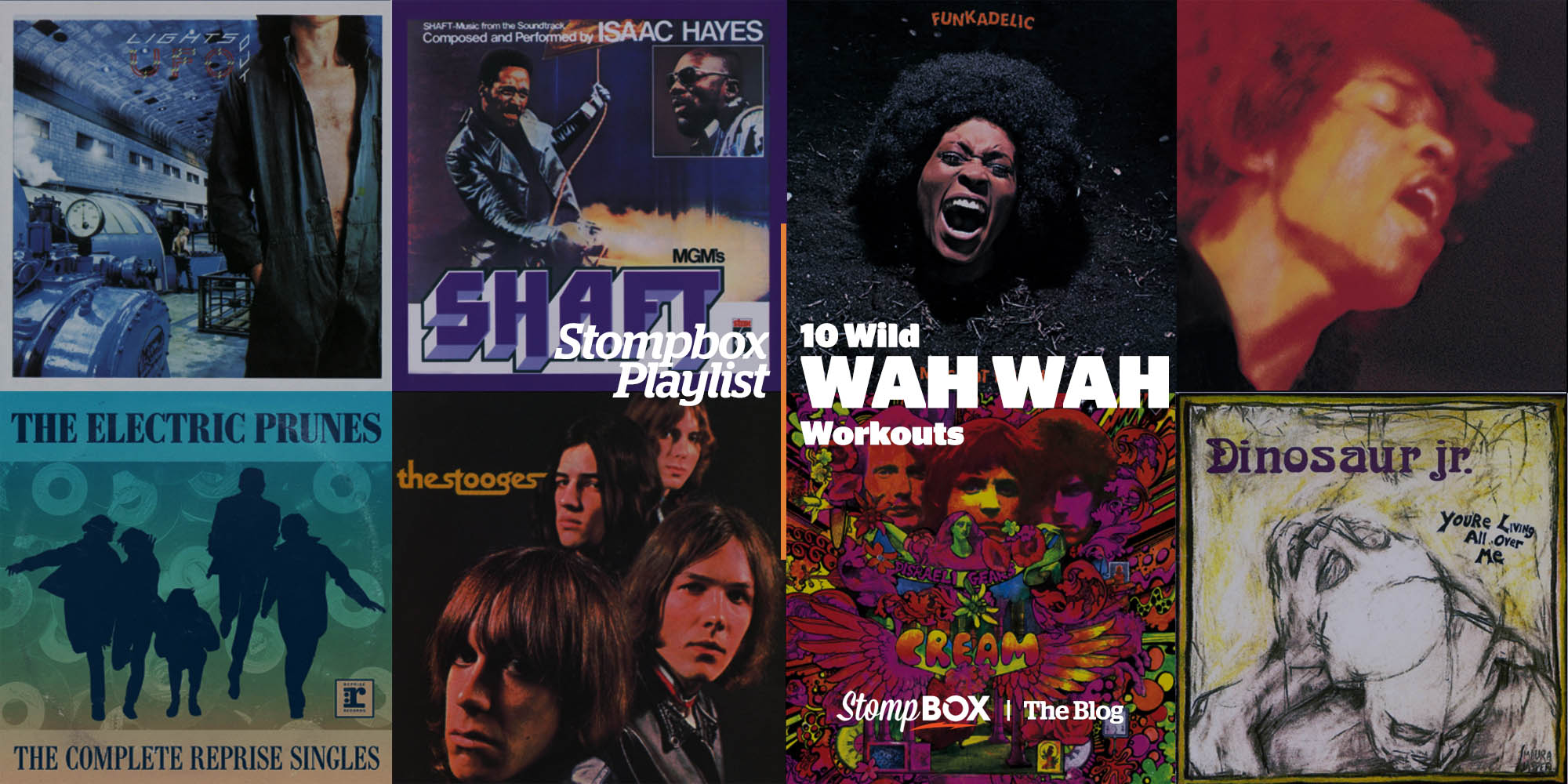Wild Wah-Wah Workouts | Pedal Playlist
Given how many guitarists have a wah-wah on their pedal board, it’s kind of funny to consider the fact that the wah wasn’t originally meant to work with a guitar. Essentially a foot-controlled roll-pass filter that sweeps the peak response up and down, the first Vox wah pedal was originally marketed to wind instrument players by the Thomas Organ Company, who advertised their new product as a means to electronically mimic the hand-held Harmon mute employed by trumpet players.
Soon after its introduction in 1967, however, it became apparent that the device was far better suited to the harmonic qualities of the electric guitar — an instrument which also happened to be far more in-demand at the time than horns or flutes. Guitarists like Jimi Hendrix and Eric Clapton loved the creative possibilities the original Vox wah-wah offered, and soon a number of other manufacturers started cranking out similar pedals. And while the wah has gone in and out of vogue (and back in again) since its birth, it’s still hard to beat for expressiveness or sheer freak-out potential.
Here are ten wicked examples of the wah-wah in action.
The Electric Prunes — Vox Wah-Wah Radio Spot
When the Thomas Organ Company began marketing their wah-wah pedal to guitarists, they tapped The Electric Prunes (a Los Angeles psychedelic band who’d recently hit #11 on the Billboard charts with “I Had Too Much To Dream Last Night”) to demonstrate the pedal’s capabilities. In what may be the coolest radio ad ever recorded, Prunes lead guitarist Ken Williams puts the pedal through its paces, even using it to make his guitar “sound like a sitar”. Like the announcer says, it’s the now sound — it’s what’s happening!
Cream — Tales of Brave Ulysses
According to Cream producer Felix Pappalardi, the band’s attempts to record this 1967 classic went nowhere until Eric Clapton — inspired by rumors that Jimi Hendrix was experimenting with the wah — procured a wah-wah pedal of his own from a nearby music store. Thusly armed, Clapton was able to conjure an audible sense of otherworldly trippiness that meshed beautifully with co-writer Martin Sharp’s poetic flights of lyrical fancy.
Jimi Hendrix — Voodoo Chile (Slight Return)
“The wah-wah pedal is great because it doesn’t have any notes,” Jimi Hendrix told Rolling Stone in 1968. Engaged in a never-ending quest to communicate with the world via his guitar, Jimi loved how the wah expanded his tonal (and expressive) capabilities. His favorite wah was reportedly an Italian-made Vox, which he put to iconic use on this megalithic slab of hard rock from 1968’s Electric Ladyland LP.
Chewing Gum — Senti Questa Chitarra
With Clapton and Hendrix (and yes, the Electric Prunes) promoting the pedal, guitarists from around the world jumped aboard the wah wagon — including Flavio Cucchi, the seventeen year-old lead guitarist of Italian band Chewing Gum. 1968’s “Senti Questa Chitarra” is the A-side of the only record these fab Florentines ever released, but it’s highly prized by garage-psych collectors just for Flavio’s insane wah wailing alone.
The Stooges — Real Cool Time
With his prodding, primitive fuzz riffs and teeth-gnashing Vox wah-wah bursts, original Stooges axeman Ron Asheton was the perfect guitar foil for the young, untamed and thoroughly “not right” Iggy Pop. This killer cut from the band’s self-titled 1969 debut is seriously drenched in Asheton’s fuzz and wah, making for a real cool time, indeed.
Funkadelic — Maggot Brain
One of the deepest, most profoundly sad guitar solos ever recorded, the instrumental title track of Funkadelic’s 1971 LP remains a jaw-dropping showcase for the majestic playing of the late, great Eddie Hazel. Though Hazel was a big fan of the Crybaby Wah, there’s little in the way of brash wah moves on the ten-minute track; instead, Hazel used his Crybaby Wah for subtle tonal and emotional shifts throughout his lengthy solo.
Isaac Hayes — Theme from Shaft
With this 1971 smash, Isaac Hayes effectively set the template Blaxploitation soundtrack music — and guitarist Charles “Skip” Pitts’ wocka-wocka rhythm part became the dictionary definition of badass funky wah action. Propulsive, slinky and dangerous, Pitts’ wah work here impeccably evokes the spirit of “the black private dick who’s a sex machine to all the chicks”.
UFO — Lights Out (Live)
While most guitarists have tended to use the wah-wah for expressive solo accents or churning rhythm figures, Michael Schenker used his wah pedals (sometimes Vox, sometimes Dunlop Crybabys) almost exclusively as a means to dial in the perfect mid-rangey tone. This live clip from 1977 offers a prime example of Schenker’s “cocked wah” sound, used in service of some typically ferocious lead work.
Dinosaur Jr. — Little Fury Things
By the 1980s, the wah-wah pedal had become something of an anachronism; since it was largely associated with 60s psychedelia or 70s funk, most punk and indie rockers wouldn’t have been caught dead using one. But J. Mascis changed all that with his searing (and utterly unironic) deployment of the Dunlop Crybaby on 1987’s You’re Living All Over Me, which made the wah cool again for a new generation of underground musicians.
Guns n’ Roses — Sweet Child o’ Mine
Right about the time that J. Mascis was re-popularizing the wah-wah for the indie crowd, Slash was doing the same for the hard rock world. His Crybaby-stoked solos on 1987’s “Sweet Child o’ Mine” really showcased the pedal’s range, accentuating the wistful wail of his lyrical passages and then snarling like a rabid dog when the band kicked into gear — and guitarists everywhere definitely took notice.
